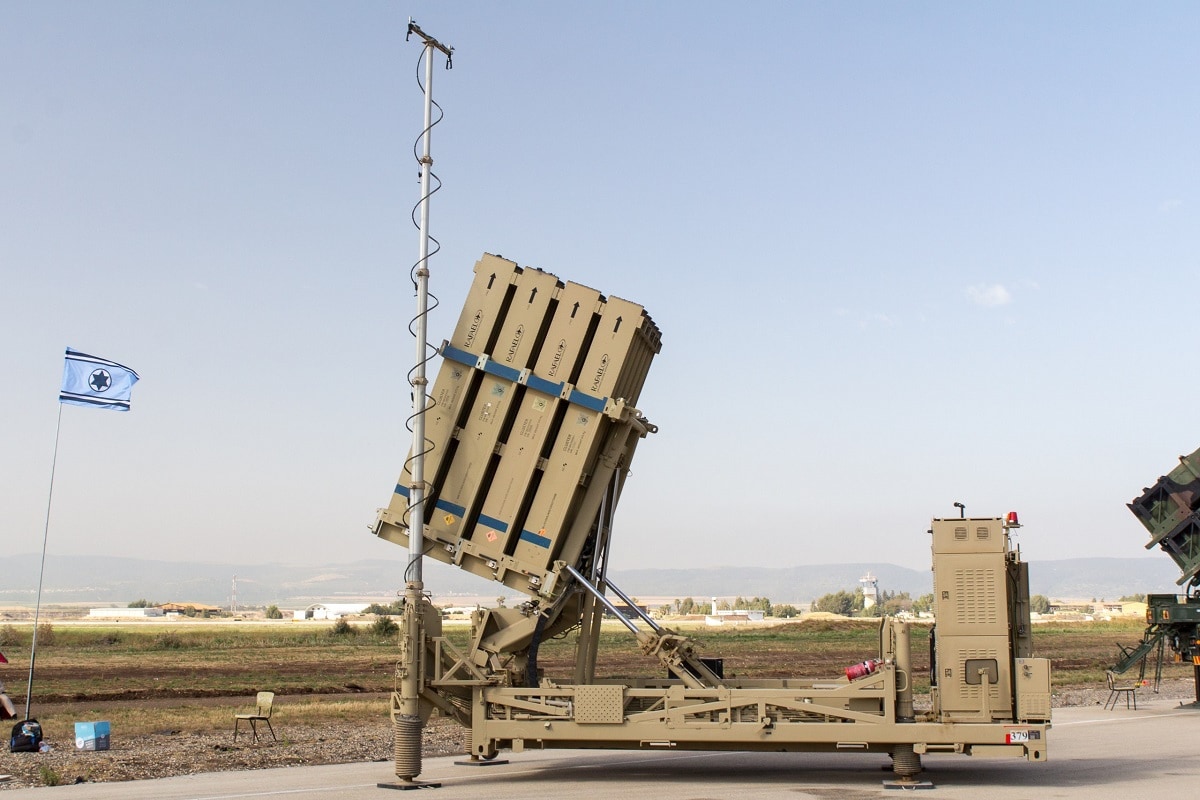The Israel Defense Forces have been a longtime purchaser of U.S. military hardware, a fact that doesn’t sit well with some members in the U.S. Congress and elsewhere. Among the American-made weapons systems that Israeli troops have put to good use in combat have included the M16 rifle and fighter jets such as the F-4 Phantom, F-15 Eagle, F-16 Fighting Falcon, and F-35 Lightning II – of which the Israelis have a special variant called the Adir.
What is not as well publicized is that there’s a flip side to the U.S.-Israeli defense partnership, i.e. sometimes America purchases Israeli-made military equipment. This was recently demonstrated by the U.S. Marine Corps purchase of Tamir interceptors.
The Basics
According to a report by Joseph Trevithick for The Drive published last week: “The U.S. Marine Corps has laid out plans to acquire three batteries worth of Iron Dome systems, including 44 launchers and 1,840 Tamir interceptors. The exact estimated value of this purchase is unknown, but based on publicly available figures the cost of the Tamirs alone could be close to $200 million. The Marines say they want Iron Dome systems primarily to help protect units from cruise missiles, but these systems can also provide defense against drones and rockets and other artillery rounds … The new details about the Marine Corps Iron Dome plans were posted yesterday on the U.S. government’s System for Award Management (SAM) contracting website as part of a notice about future potential sole-source deals with Raytheon. The Irom Dome’s manufacturer, Israel’s Rafael, has a partnership with Raytheon to offer the system in the United States, where it is sometimes also referred to as SkyHunter.”
The Iron Dome (כִּפַּת בַּרְזֶל; Kippat Barzel) system is, of course, already well-known for its battle-proven effectiveness in protecting the Israeli people against Katyusha rockets launched by Hezbollah terrorists. The impetus for the creation of the Iron Dome can be traced back to the Second Lebanon War in 2007, during which time those Hezbollah thugs launched over 4,000 Katyushas, a significant portion of which targeted Haifa, Israel’s third-most populous city; 44 civilians perished in these attacks, and thousands of others were injured.
Hence the creation of Iron Dome – thanks to Rafael in tandem with Israel Aerospace Industries (התעשייה האווירית לישרא; ha-ta’asiya ha-avirit le-yisra’el) – which first went operational in 2011 and soon proved its mettle in engagements such as Operation Pillar of Defense, Operation Protective Edge, and Operation Shield and Arrow. Boasting a 200-lb warhead, a length of 9.8 feet, a diameter of 6.3 inches, and a maximum speed of Mach 2.2, the defense system has a 90 percent success rate, according to 19FortyFive colleague Maya Carlin.
Regarding the Tamir interceptor missile component of the Iron Dome, a major plus is its relatively low cost, somewhere in the range of $40K to $100K per year, which is a pittance compared with other surface-to-air missiles (SAMs). But that relatively cheap price should not be mentally equated with cheap quality. As already mentioned, there’s a reported success rate of 90 percent, which is largely due to the fact that the Tamirs employ an active radar seeker and a two-way datalink that allows it to receive updated targeting data via Iron Dome’s battle management and control unit to further improve its accuracy. For the purpose of delivering the killing blow to the targets, Tamir uses ring-shaped high-explosive blast-fragmentation warheads with laser proximity fuzes.
The standard Iron Dome battery hosts three to four launchers, each in turn packing 20 Tamirs.
Iron Dome: Stacking Up Against Adversaries’ Missile Threats
Defending against Katyusha rockets and drones is one thing, but defending against cruise missiles is another, and Iron Dome’s ability to defeat cruise missiles is strictly an academic one at this point in time. China in particular has a formidable arsenal of cruise missiles, such as the YJ-63 Land Attack Cruise Missile (LACM), DH-10 / CJ-10 LACM, YJ-12 Anti-Ship Cruise Missile (ASCM), and YJ-18 ASCM. Not to be outdone, the so-called Democratic People’s Republic of Korea (DPRK), better known as North Korea, in addition to ramping up its own cruise missile launches, also revealed a new cruise missile-armed corvette last week, the Amnok class.
The Way Ahead?
I’ll give Mr. Trevithick the last word here: “The service has not publicly laid out a detailed schedule for when it plans to acquire the accompanying arsenal of 1,840 Tamir interceptors … The total size of the Marine Corps Iron Dome force could well grow further as time goes on in response to still-emerging threats and evolving U.S. military doctrine … The Corps now looks set to have a robust Iron Dome capability that will expand the air and missile defense capabilities for its deployed units by the end of the decade.”
Christian D. Orr is a former Air Force Security Forces officer, Federal law enforcement officer, and private military contractor (with assignments worked in Iraq, the United Arab Emirates, Kosovo, Japan, Germany, and the Pentagon). Chris holds a B.A. in International Relations from the University of Southern California (USC) and an M.A. in Intelligence Studies (concentration in Terrorism Studies) from American Military University (AMU). He has also been published in The Daily Torch and The Journal of Intelligence and Cyber Security. Last but not least, he is a Companion of the Order of the Naval Order of the United States (NOUS).
From the Vault
The Navy Sent 4 Battleships To Attack North Korea
‘Sir, We Hit a Russian Submarine’: A U.S. Navy Sub Collided with a Nuclear Attack Sub

